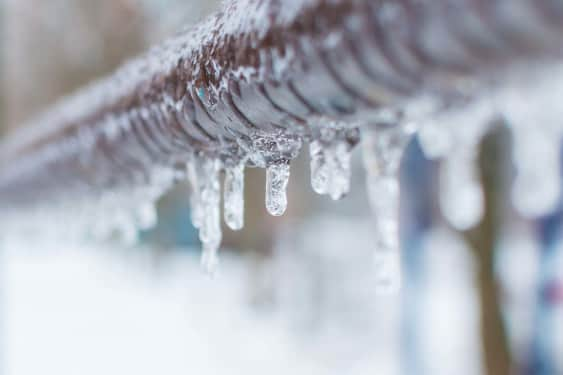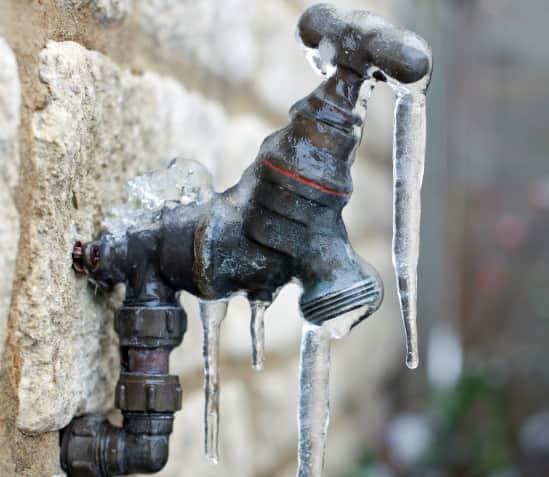Ah, frozen pipes – the bane of homeowners during freezing winter weather. When water freezes, it expands, and your pipes aren’t exactly fans of that expansion. It’s like trying to squeeze into skinny jeans after Christmas dinner – uncomfortable and potentially disastrous. When a block of ice forms in your pipes, it can reduce water pressure or even create a watertight seal that stops water from flowing to the taps. In this article, we discuss how you can restore running water through your pipes, what you should do if a pipe bursts, and how to prevent pipes from freezing again in the future.

What to do if you have a burst pipe
In the unfortunate event of a burst pipe follow the following steps:
- Turn off the water supply coming into your home at the stop tap.
- Switch off your boiler.
- Open all your taps to drain the system as quickly as possible, saving water in a bucket for flushing the loo and washing your hands.
- When the water stops running. Turn all the taps off.
- Call a qualified plumber to repair the burst pipe.
- While you wait for the plumber to arrive, mop up any water as soon as possible to prevent water damage and the formation of mould and mildew. Fans and dehumidifiers can also be set up in the area to help absorb the water and dry any affected surfaces.
IF WATER HAS LEAKED NEAR YOUR ELECTRICS, DO NOT TOUCH THEM AND SWITCH THEM OFF AT THE FUSE BOX.

